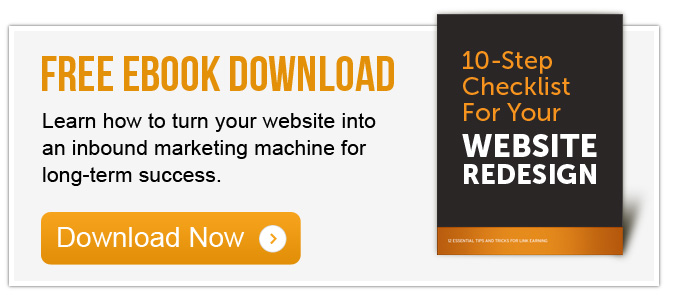 Over the last decade, the purpose and functionality of an organization’s website has changed drastically. Websites are now storefronts, sales representatives, customer service personnel and ultimately, an extension of your team. If your website doesn’t tell your company’s story and go above and beyond to address a visitor’s needs, you’re most likely missing out on opportunities to convert a prospect into a customer.
Over the last decade, the purpose and functionality of an organization’s website has changed drastically. Websites are now storefronts, sales representatives, customer service personnel and ultimately, an extension of your team. If your website doesn’t tell your company’s story and go above and beyond to address a visitor’s needs, you’re most likely missing out on opportunities to convert a prospect into a customer.
Here are a few must-have content related elements that will help guarantee your website visitors have the best experience possible.
1. Address a Visitor’s Need / Pain Point
When brainstorming a website design, the first instinct that most companies have is to start talking about themselves including credentials, skills, and knowledge. While those are important attributes, they are not what your prospects are searching for. If your content does not align with your prospects’ needs, you will not be found organically. Website content that is written to be about the visitor, rather than the company, should specifically address a visitor’s needs and point points and tell a clear story about how your company can provide solutions.
2. Tell a Compelling Story
As stated above, prospects and customers search for solutions to their problems. One of the easiest ways to match your content to what your potential customers are searching for is to tell a story. It may seem simple, but don’t forget to start at the beginning. Describe your offerings from the prospect’s point of view. You can tell a fictional (but accurate) story, or feature past case studies and customer testimonials.
3. Provide Content that is Timely, Relevant and Useful
Every person who visits your site is unique. How can you ensure that you have content that will appeal to all of them? Luckily, most visitors to your site can be put into 2 groups: those who want to learn, and those who are ready to buy. Many visitors just want to learn more about their problem and the options for solving it, and others are ready to pull the trigger on the solution you are offering.
There are two common mistakes businesses make in regard to content offered on a website. Some sites offer loads of valuable information, with no clear call to action that would lead a visitor to convert. The other mistake is being too heavy-handed with the BUY NOW demands, alienating the researching visitors who are closer to the top of the funnel. Both will hurt your bottom line, the former by letting qualified prospects get away, and the latter by offending them. Make sure you have content that fits into both the “learn” and “buy” categories.
Using resources like Hotjar or other heatmap tools can help you identify exactly how visitors are navigating your site and the areas and content they are spending the most time reviewing and reading.
4. Use Smart / Dynamic Content
Back in the days of home phones, or even early cell phones, you phone was identical to your neighbor’s - nothing about it was unique to you. Today, a smartphone can be customized to your particular needs and wants. Smart website content is content intelligently personalized to your prospects’ needs.
Using lists or pre-set parameters like referral sources, smart content will display material targeted to unique users - a practice that has been shown to dramatically outperform generic content.
5. Update Your Blog Regularly
It’s easy to relegate blogging to the back burner (and even stop doing it) as the results are not always instantly apparent. Don’t make that mistake - blogging is important to both your technical site performance, and a favorable visitor experience.
Adding new pages to your site can favorably impact your search rankings, and blogging is an easy way to do this. If your business is in an industry with frequent updates or recurring events, fresh content is particularly important for good search positioning. Blog posts on a wide range of topics are also an effective way to organically capture long-tail keyword traffic that might not be high volume, but highly qualified.
Blogging can also give you good results in less technical ways. Taking the time to share interesting behind-the-scenes action, commentary on local events, or employee personalities can make a personal connection that will trigger conversions.
Do you have a gorgeous, engaging website that loads quickly… with no results? If this is happening to you, your website is probably missing the critical elements that drive prospects to convert. By incorporating these key content strategy elements, you’ll improve your site’s organic search results and provide a more engaging experience for prospects and customers.





